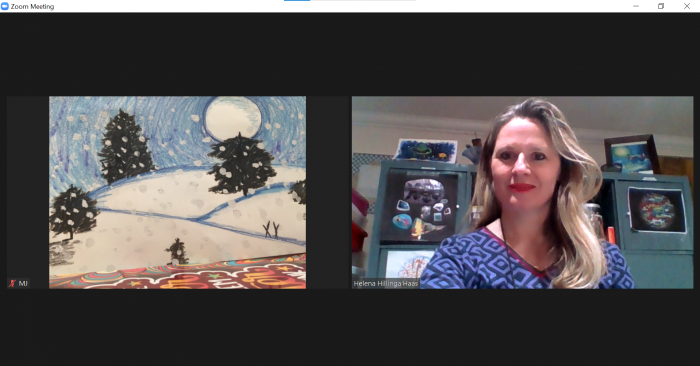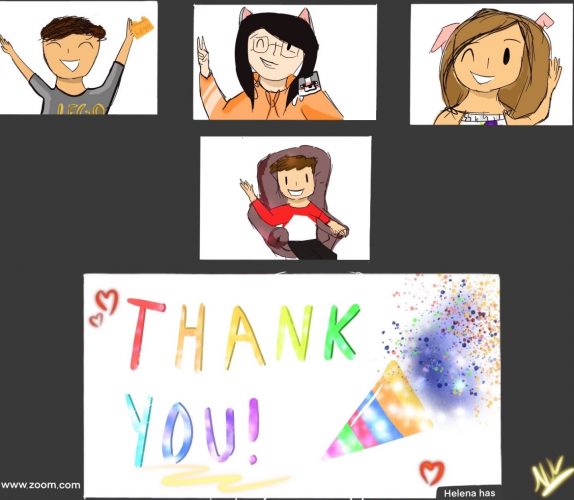
As part of the Child Life Department, art and music therapy at Seattle Children’s introduces different techniques to promote patients’ physical and mental health, either at patients’ bedside to assist in the art-making process or virtually in smaller groups and one-to-one sessions.
Through a variety of creative materials and techniques, which can include drawing, painting, clay and collage, patients learn about their relationship with art with support from art therapists to help them express themselves, process emotions and connect with loved ones from afar.
Seattle Children’s art therapist, Helena Hillinga Haas, leads many of these individual and virtual group sessions and explains how the process can help develop autonomy, strength and resilience for children and teenagers coping with symptoms, anxiety and traumatic experiences.
Seattle Children’s art therapy program receives funding from a variety of philanthropic entities, in addition to supporting virtual art therapy services one day per week specifically for family members of cancer care patients as part of a new grant. The virtual sessions are new and a result of needing to pivot the way services are provided for family members of patients with childhood cancers and blood disorders – including complex conditions like sickle cell disease—conditions that put these patients at higher risk of severe illness from COVID-19. Other family members can receive these services remotely, which has been a relief to many parents and caregivers who see an increase in loneliness and isolation as a result of the pandemic.

“For patients, creating art and exploring new art materials is an important part of themselves to express their identity and show who they are beyond their illness,” Haas said. “And with the virtual sessions, it’s really impactful to have access to other siblings who can relate and share through their own imagery how they have been impacted in real time by an illness in the family. This is a unique and non-threatening way to express themselves. It is empowering.”
The virtual sessions for siblings of cancer care patients led by Haas during the pandemic also have closely tied technology and art together. By building out custom sites in Minecraft with assistance from Garrett Goody, a therapeutic gaming specialist, or simply participating in joint illustration sessions using interactive drawing apps, children can spend time with siblings and loved ones remotely all over the country to showcase each other’s artistic works and share their experiences. Building important social emotional skills — like empathy, problem-solving, and decision-making — are key goals of the virtual art therapy groups.
“You get to see how the process of art therapy unfolds by creating artwork together and there is a level of excitement to be recognized for their work,” Haas said.
RESOURCES:

